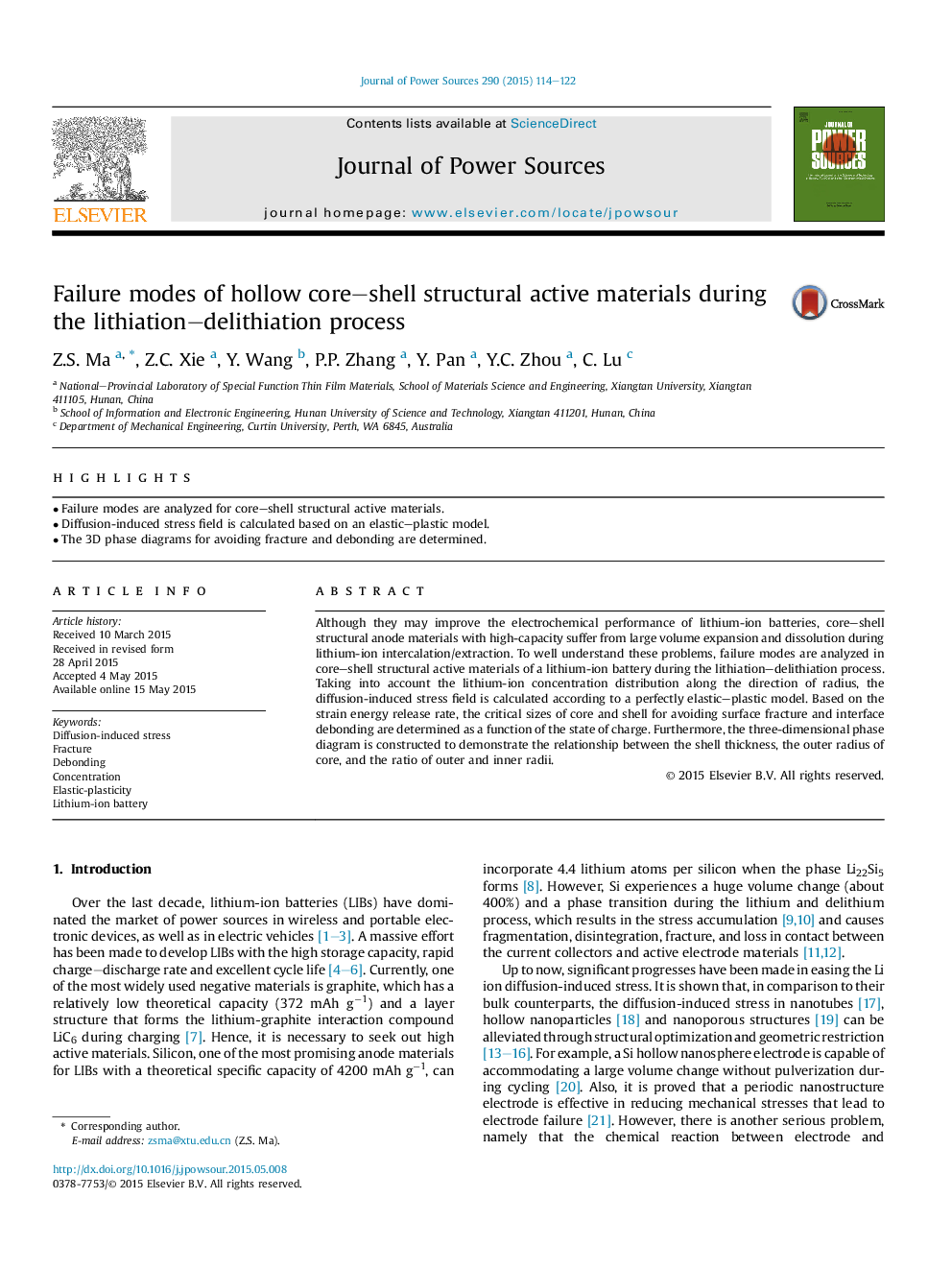| Article ID | Journal | Published Year | Pages | File Type |
|---|---|---|---|---|
| 1286080 | Journal of Power Sources | 2015 | 9 Pages |
•Failure modes are analyzed for core–shell structural active materials.•Diffusion-induced stress field is calculated based on an elastic–plastic model.•The 3D phase diagrams for avoiding fracture and debonding are determined.
Although they may improve the electrochemical performance of lithium-ion batteries, core–shell structural anode materials with high-capacity suffer from large volume expansion and dissolution during lithium-ion intercalation/extraction. To well understand these problems, failure modes are analyzed in core–shell structural active materials of a lithium-ion battery during the lithiation–delithiation process. Taking into account the lithium-ion concentration distribution along the direction of radius, the diffusion-induced stress field is calculated according to a perfectly elastic–plastic model. Based on the strain energy release rate, the critical sizes of core and shell for avoiding surface fracture and interface debonding are determined as a function of the state of charge. Furthermore, the three-dimensional phase diagram is constructed to demonstrate the relationship between the shell thickness, the outer radius of core, and the ratio of outer and inner radii.
